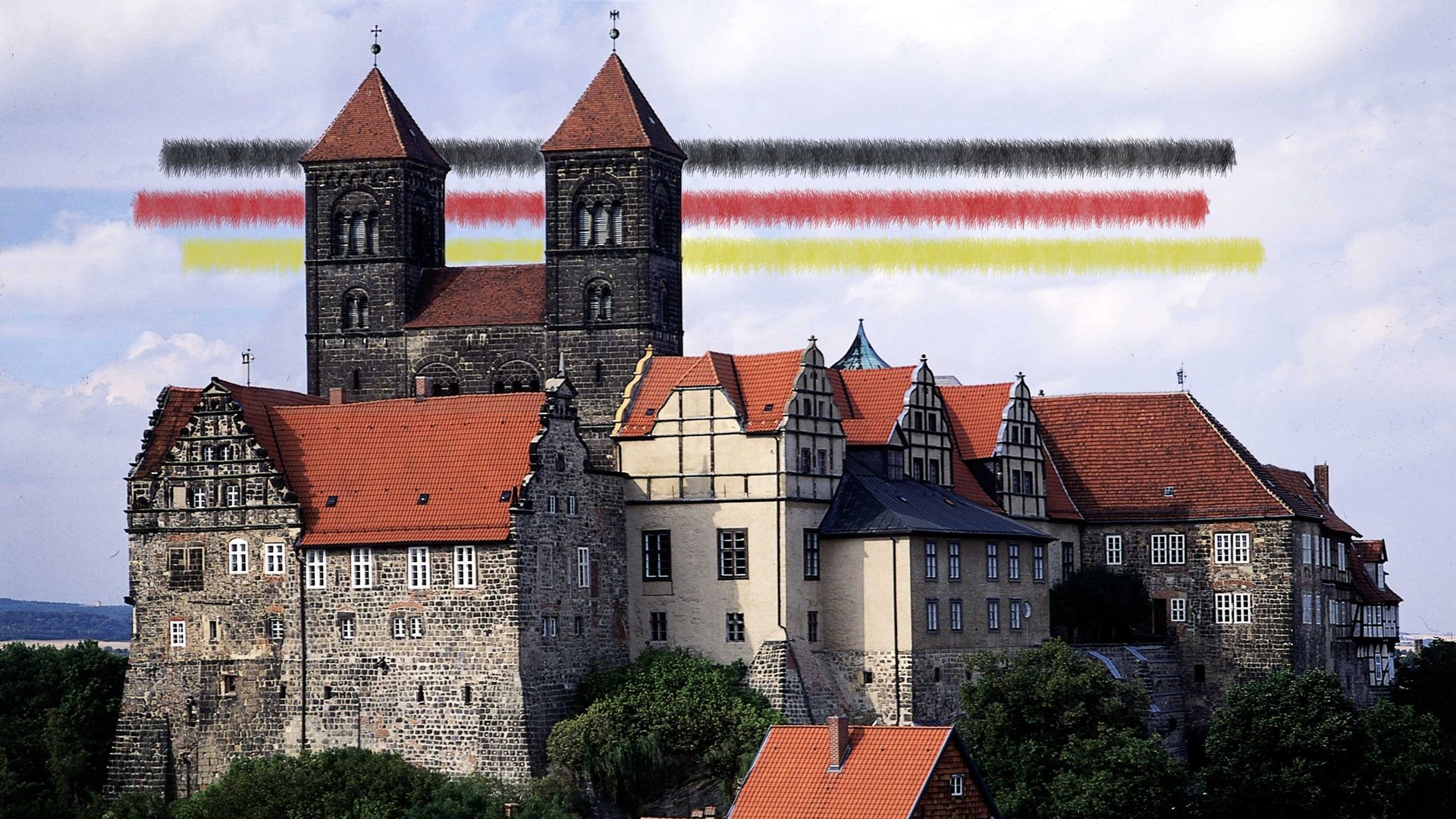Abraham Lincoln coined the phrase, “If you look for the bad in people expecting to find it, you surely will.” In my experience, if you look for bad people you will surely find those, too.
So when my train last week from Berlin stopped in Magdeburg, the capital of Saxony-Anhalt, I didn’t get off to witness the AfD’s party conference ahead of the 2024 European election (“For the true Europe to live, this EU has to die”).
Instead, I stayed on for another 50 minutes to look for beauty. I wanted to check out a Unesco world heritage site at the edge of the Harz mountains: Quedlinburg.
This place is from another world. You basically walk through a Disney fairytale; I expected a pumpkin carriage to come around every corner. It is a jewel, rightfully mentioned in the travel guide 1000 Places to See Before You Die.
Revelling in half-timbered houses – Fachwerk – quickly turns boring, I realise, but just bear with me, I’ll get to the Nazi-cult-meets-Indiana-Jones part in a bit.
What’s so special about Fachwerk?, you may ask, because you can indeed find it pretty much anywhere in Germany. But not in the same entirety. Quedlinburg has more than 2,000 half-timbered buildings in total, spanning eight centuries. The oldest dates back to 1347, the youngest are examples of Jugendstil buildings (our art nouveau). Wherever you look in the historic centre, you see small blue-white plaques identifying houses as listed monuments.
Towering over them is the castle mount, a Game of Thrones-style location. Heinrich I (Henry the Fowler), who established the Ottonian dynasty, was buried here in 936. The Saxon is often labelled the first German king although his time, source-wise, is one of the most sparse in the entire European Middle Ages. Still, historians agree he did play a decisive part in unifying what was to become a German empire eventually. Quedlinburg served as its first capital, hosting Reichsversammlungen, imperial assemblies, in the 10th and 11th centuries.
Enter from the extreme right Heinrich Himmler, the Reichsführer SS – who was said to have thought himself a reincarnation of the other Heinrich. He used the millennial anniversary of Henry’s death in 1936 to create a mythical cult around the Germanic “Führer from a thousand years ago”. The trouble was, in those 1,000 years, Henry’s mortal remains had somehow gone missing from his hilltop chapel grave. Construction works, expansions, well, things get lost. No matter, thought Himmler, because an SS underling dug up bones near what was by now the impressive hilltop church St Servatius. Himmler declared them to be Henry’s and ritually buried them in the crypt next to his wife, Queen Mathilde. In 1938 the Nazis had seized and desecrated the whole church and turned it into a weird SS votive site.
Today, Mathilde rests alone again. The bones Himmler placed next to her are certified non-royal; Heinrich’s remains are still missing. But his widow is surrounded by her treasures again. During the second world war, Lutheran authorities had hidden them in a mineshaft on the outskirts of town. They were later found and guarded by the US army, but objects went missing: among them the Samuhel Gospel, a ninth-century Latin manuscript with a jewel-encrusted cover; the 1513 Evangelistar with a couple of jewels on the cover, too, precious reliquary flasks and boxes and a carved ivory comb (allegedly from Henry’s powder room).
For more than four decades the whereabouts were unknown until, finally, an investigator traced the lost treasure to Texas, home to a former army lieutenant who had sent the items to the US through the military mail in 1945 and whose heirs were trying to sell them. Most were returned in the 1990s and are on display. As are, by the way, paintings by Bauhaus artist Lyonel Feininger saved from Nazi destruction by a Quedlinburg collector.
Next year, Quedlinburg will celebrate 30 years of world heritage status, as one of the best-preserved mediaeval and renaissance towns in Europe. By German standards, this is very rare. Quedlinburg escaped major damage during the war, and after.
The GDR, because the ancient houses weren’t in great shape, had specific plans to tear down most of the old town and build socialist Plattenbauten (large panel-system buildings). Luckily, authorities didn’t have the funds (which, sadly, was often the case in west Germany). And the end of the GDR came just in time for capitalism to save the half-timbered houses from falling apart. Come and see for yourself.




